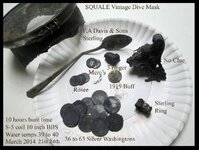BryanM362
Hero Member
- Mar 22, 2013
- 870
- 426
- 🏆 Honorable Mentions:
- 1
- Detector(s) used
- E-Trac with Sun Ray probe, Garrett AT Pro, White's Classic SL, Garret Pro-pointer
- Primary Interest:
- Metal Detecting
Question About Detecting Back in the 60's, 70's, 80's
I've heard that back when metal detectors first became availalbe to the hobbyists, that old coins, silver, gold, and jewelry was easy picking.
Can some of the folks that hunted back then share some of their experiences? Was it really that easy? Were the parks loaded?
Thanks!
I've heard that back when metal detectors first became availalbe to the hobbyists, that old coins, silver, gold, and jewelry was easy picking.
Can some of the folks that hunted back then share some of their experiences? Was it really that easy? Were the parks loaded?
Thanks!
Upvote
0







